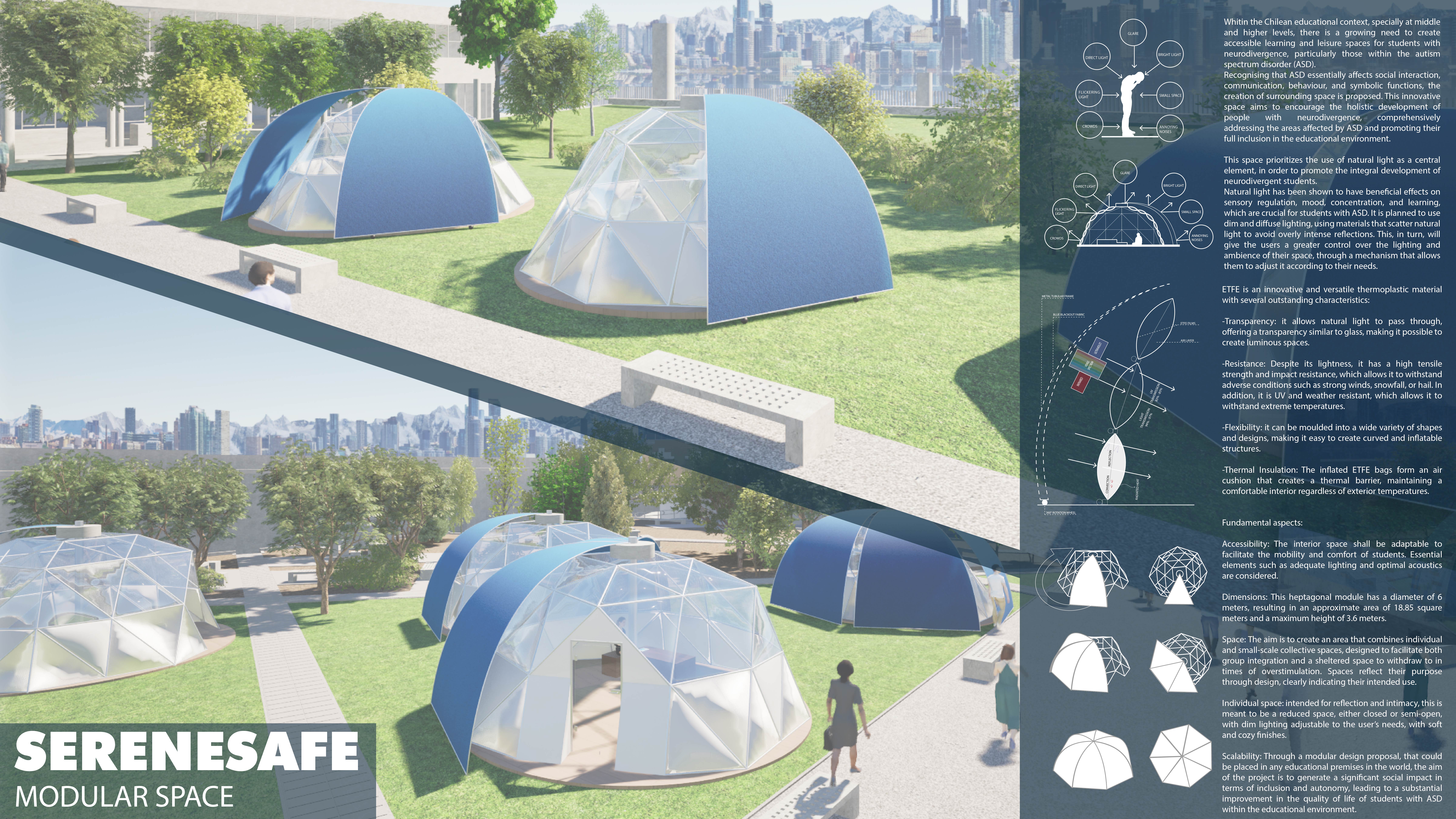2024 - SereneSafe: Modular Space

Category
Daylight in Buildings - Region 3: The Americas
Students
Benjamin Gonzalo Diaz Cornejo, Josefa Andrea Gonzalez Troncoso & Catalina Belen Negrete Coronado
Teacher
Constanza Veronica Yanez Labarca
School
Universidad Técnica Federico Santa María
Country
Chile
Download
Download project board
Within the Chilean educational context, especially at middle and higher levels, there is a growing need to create accessible learning and leisure spaces for students with neurodivergence, particularly those within the autism spectrum disorder (ASD). Recognising that ASD essentially affects social interaction, communication, behaviour, and symbolic functions, the creation of surrounding space is proposed. This innovative space aims to encourage the holistic development of people with neurodivergence, comprehensively addressing the areas affected by ASD and promoting their full inclusion in the educational environment.
Fundamental aspects:
- Transparency: It allows natural light to pass through, offering a transparency similar to glass, making it possible to create luminous spaces.
- Resistance: Despite its lightness, it has a high tensile strength and impact resistance, which allows it to withstand adverse conditions such as strong winds, snowfall, or hail. In addition, it is UV and weather resistant, which allows it to withstand extreme temperatures.
- Flexibility: It can be moulded into a wide variety of shapes and designs, making it easy to create curved and inflatable structures.
- Thermal Insulation: The inflated ETFE bags form an air cushion that creates a thermal barrier, maintaining a comfortable interior regardless of exterior temperatures.
- Dimensions: This heptagonal module has a diameter of 6 meters, resulting in an approximate area of 18.85 square meters and a maximum height of 3.6 meters.
- Individual space: Intended for reflection and intimacy, this is meant to be a reduced space, either closed or semi-open, with dim lighting adjustable to the user’s needs, with soft and cozy finishes.

























